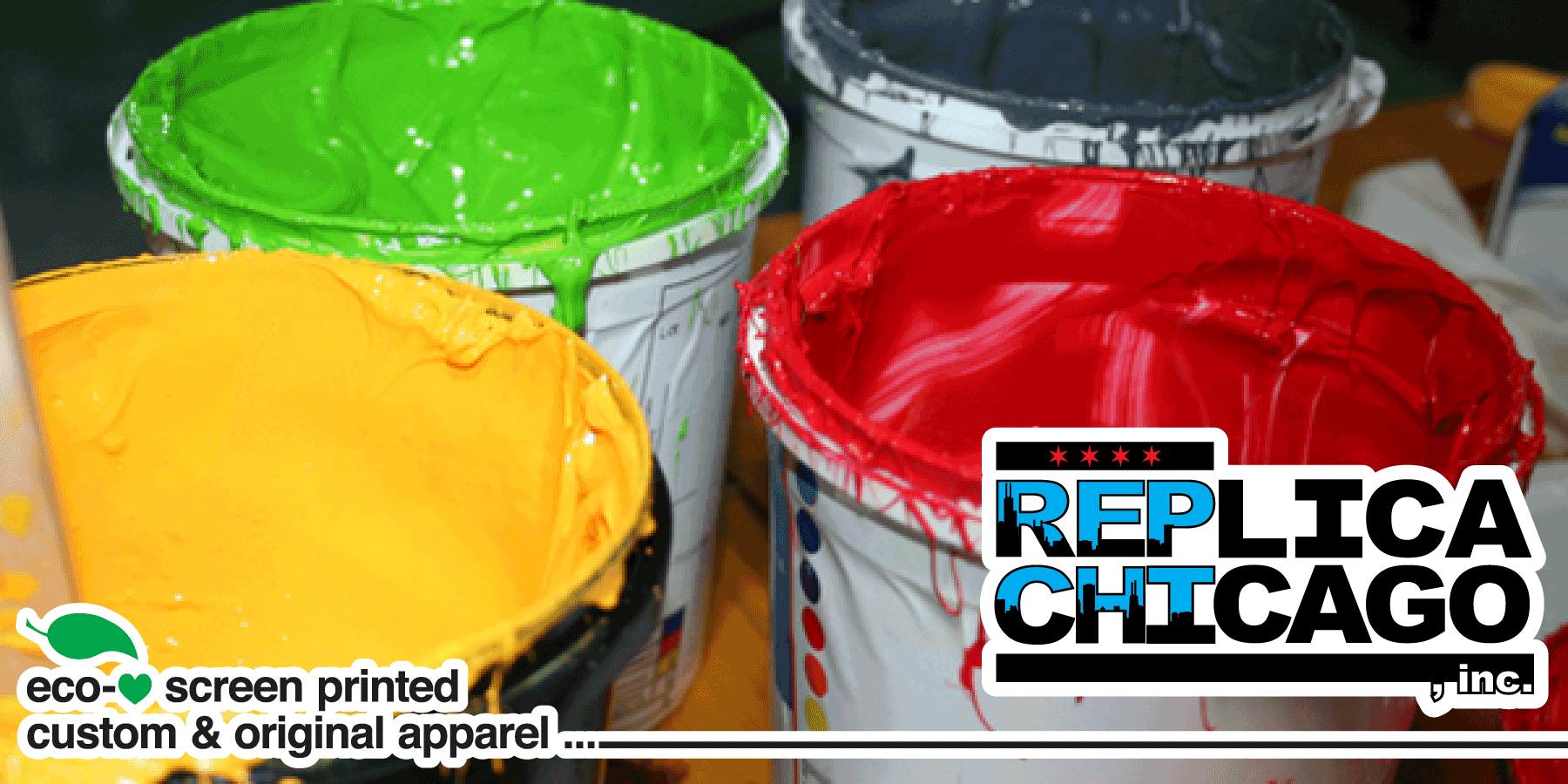High-Quality Custom Screen Printing for Team Apparel
High-Quality Custom Screen Printing for Team Apparel
Blog Article
Display Printing Uncovered: Everything You Required to Understand About Tee Shirt and Garment Printing Methods
If you have actually ever asked yourself exactly how those lively styles finish up on your favorite tee shirts, you're in the ideal area. Screen printing is a remarkable method that combines art with strategy, supplying countless possibilities for creativity. Recognizing the principles, from tools to ink choices, can considerably influence your outcomes. Prepared to check out the vital elements that make screen publishing an art type? Allow's reveal the information that can raise your projects.
The Fundamentals of Display Printing: How It Functions
When you dive into display printing, you'll discover it's both an art and a scientific research. At its core, screen printing includes producing a pattern, or display, that enables ink to pass with just in details areas.
Following, you'll mix your inks and prepare your printing surface area. Position the screen over the material, then use a squeegee to push ink via the display onto the garment. This procedure needs accuracy, as you want clear, vibrant prints. After printing, you'll heal the ink with heat, ensuring it abides by the fabric and lasts through laundries. Each action is necessary, and mastering them will certainly boost your display printing skills, changing straightforward garments right into distinct, expressive pieces.
Sorts Of Display Printing Methods
As soon as you comprehend the essentials of display printing, it's time to explore the numerous techniques that can raise your styles. One prominent technique is typical screen printing, where ink is pressed through a stenciled screen.
An additional choice is plastisol printing, recognized for its toughness and brilliant colors, making it a favored for several brand names. Experiment with halftone printing to develop gradient results and detailed styles.
Important Devices for Screen Printing
To achieve spectacular lead to display printing, having the appropriate devices is basic. You'll need a tough screen printing structure, which holds the mesh that moves your layout onto the garment. Next, buy top notch mops; these are important for applying ink evenly throughout the screen. You'll likewise call for a great direct exposure device to create your displays, as well as a washout booth for cleansing them after usage. A reputable warm resource, like a conveyor clothes dryer or warm press, is important for curing your prints to ensure long life. Do not forget an appropriate office, outfitted with tables and storage for your products. Finally, safety gear, such as gloves and masks, will maintain you safe from chemicals and inks. With the right devices, you'll be well on your way to producing professional-quality prints.
Selecting the Right Inks and Products
When picking inks and products for display printing, you require to consider the kind of ink that functions best for your project. Believe concerning textile compatibility to assure your layouts look excellent and last lengthy. Likewise, explore eco-friendly ink options to make your printing procedure more sustainable.
Kinds Of Display Inks
Selecting the best display ink is important for accomplishing vivid, durable prints that meet your job's requirements. There are a number of kinds of screen inks to analyze. Plastisol ink is prominent for its adaptability and ease of usage, supplying exceptional color opacity on dark materials. Water-based ink, on the various other hand, provides a softer feel and is eco-friendly, making it perfect for those wanting to lessen their ecological impact. Discharge inks remove color from the material, resulting in a soft, classic appearance yet need particular handling. Specialty inks, such as metal or glow-in-the-dark, can add unique effects to your designs. Assess your project needs and pick the ink that aligns ideal with your preferred result.

Fabric Compatibility Factors To Consider
Comprehending fabric compatibility is crucial for achieving top notch display prints, especially because various materials respond distinctly to various inks. When picking inks, take into consideration the textile type-- cotton, polyester, or blends. For cotton, water-based inks work well, providing gentleness and breathability. Polyester, on the various other hand, commonly needs plastisol inks for better adhesion and vibrant shades. If you're publishing on blends, you could require to use a combination of both kinds. Always evaluate your inks on sample material to guarantee they adhere effectively and maintain shade stability. Additionally, remember that fabric weight and appearance can impact the last outcome, so choosing the right ink and material combination is essential for your task's success.
Eco-Friendly Ink Options
Environment-friendly continue reading this inks are becoming a popular option for screen printers who intend to lessen their environmental influence while preserving quality. When selecting inks, think about water-based inks, which are less hazardous and simpler to cleanse up contrasted to traditional solvents. These inks bond well with textiles, delivering lively outcomes without harmful chemicals. You might additionally discover eco-solvent inks that make use of fewer volatile organic substances (VOCs), making them a much safer alternative for both your wellness and the earth.
In addition, look for inks made from renewable energies, such as soy or vegetable-based options. By selecting the ideal inks and products, you'll not just create sensational layouts yet likewise add to a more sustainable printing process. Make the switch, and your prints will reflect your commitment to the setting!
Preparing Your Layout for Display Printing

File Style Requirements
To assure your style looks sharp and lively on textile, you'll need to pay very close attention to submit style demands for display printing. Beginning with vector data like AI or EPS, as they can be scaled without losing quality. If you use raster pictures, select high-resolution data, such as TIFF or PNG, preferably at 300 DPI. Stay clear of making use of JPEGs, as they can lose clearness when resized. Likewise, make certain your style has a transparent history to prevent unwanted white sides on your prints. Lastly, keep color modes in mind; CMYK is common for screen printing, so transform your RGB designs as necessary. By adhering to these standards, you'll establish your artwork up for an effective print.
Color Separation Methods
Shade splitting up is a vital action in preparing your style for screen printing, and grasping it can considerably improve your print high quality. You'll need to damage your style into specific shades, as each shade requires a different display during printing. This accuracy not just assures exact shade representation however likewise streamlines the printing process.
Resolution and Size
Accomplishing the best lead to display printing begins with guaranteeing your layout has the ideal resolution and dimension. Preferably, your art work must be at least 300 DPI (dots per inch) for sharp, clear prints. Your final product could look pixelated and less than professional. if you make use of reduced resolution.
When it comes to size, consider the dimensions of your print location. Layout your art work to match the last print size, preferably creating it in the actual measurements you'll be printing. In this manner, you'll avoid any unexpected scaling issues.
Constantly examine your layout in both vector and raster layouts. Vector graphics can be scaled without losing quality, making them optimal for screen printing. Preparing properly will guarantee your design looks outstanding on every garment!
Step-by-Step Display Printing Refine
Screen printing is a dynamic procedure that allows you to produce vivid designs on various surface areas. To get started, you'll require a screen, emulsion, and your picked ink.
After washing out the unexposed solution, your display is prepared. Set it up on your printing surface area and align your garment beneath it. Pour ink onto the display and use a squeegee to push the ink via the stencil onto the material. Raise the screen very carefully and let the print dry. Cure the ink making use of heat to guarantee longevity. That's it! You have actually efficiently screen printed your layout.
Tips for Successful Display Printing Projects
While you're diving right into your screen printing tasks, bear in mind that preparation is vital to success. Begin by collecting all your materials-- inks, screens, garments, and squeegees. A clean work space assists avoid undesirable mistakes, so clean up prior to you begin.
Following, verify your artwork is high-resolution and effectively sized for your garment. Evaluate your screen for proper direct exposure and tidy it completely to stay clear of spots. When mixing your inks, follow the manufacturer's standards to attain the right consistency.
Throughout printing, apply even stress with your squeegee for consistent results. Do not rush; take your time to verify each print fulfills your standards. After printing, allow your garments dry completely prior to managing or packaging them.
Lastly, constantly maintain a sample of your help future recommendation. This way, you can examine he said your progression and improve your strategies gradually. Happy Clicking Here printing!

Regularly Asked Inquiries
How much time Does It Require To Establish up a Display Printing Job?
Establishing up a display printing work typically takes about half an hour to an hour. You'll prepare the screens, mix inks, and change journalism. The moment varies based on complexity and experience, so remain arranged!
Can I Print on Different Fabric Keys In Utilizing the Very Same Method?
Yes, you can publish on different material types utilizing the very same method, yet you'll require to adjust your settings and inks. Some fabrics soak up ink in different ways, so exploring assurances the most effective outcomes for each and every material.
What Prevail Blunders to Prevent in Display Printing?
When screen printing, prevent typical errors like making use of the incorrect ink, neglecting proper direct exposure times, or avoiding pre-press checks. Always evaluate your configuration and maintain clean screens to guarantee high quality results each time.
Exactly How Can I Appropriately Tidy and Maintain My Display Printing Tools?
To effectively tidy and keep your display printing tools, you need to on a regular basis wash screens with suitable solvents, check mops for wear, and ensure all tools are kept completely dry and dust-free. Uniformity enhances and protects against expensive repair work efficiency.
Is Display Printing Eco Friendly Compared to Other Methods?
Screen printing can be more eco pleasant than other methods, especially if you use water-based inks and eco-conscious materials. By picking sustainable supplies and methods, you minimize waste and minimize your effect on the planet.
Display Printing Uncovered: Whatever You Required to Know About Tee Shirt and Garment Printing Strategies
At its core, screen printing entails creating a stencil, or display, that enables ink to pass via just in certain areas. Placement the screen over the textile, then use a squeegee to press ink through the screen onto the garment. One popular method is traditional screen printing, where ink is pushed via a stenciled display.When picking inks and products for screen printing, you need to take into account the kind of ink that works ideal for your project.
Report this page